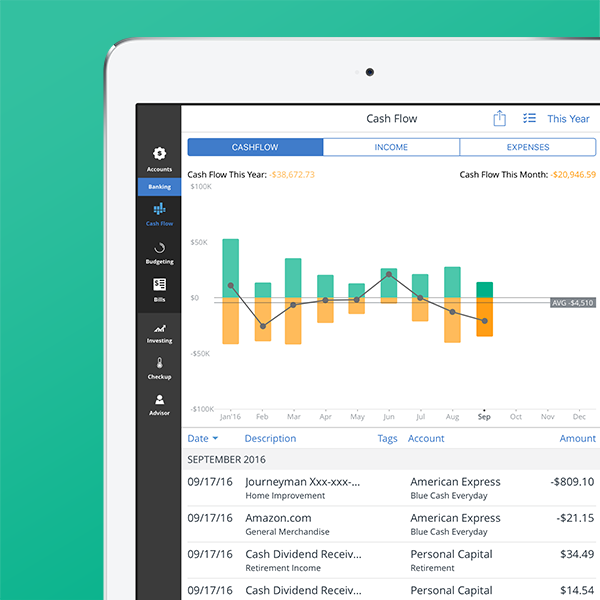Throughout your working life, you’re always trying to reduce your tax burden. Why should retirement be any different? By making one key decision, you can eliminate your tax liability in retirement. The key is opening a tax-free retirement account.
Tax Free Roth Accounts
There are two types of accounts that allow you to eliminate taxes in retirement – a Roth Individual Retirement Account (IRA) and a Roth 401k.
Both accounts are funded with after-tax money. Which means you pay taxes on your contributions, but then never have to pay tax again (assuming you meet the requirements for a qualified distribution).
While you still have to pay taxes on your contributions, the benefit of not paying taxes on your earnings is tremendous.
Tax Now Vs. Tax Later
Imagine you’re a farmer. You have the option to pay taxes on the value of the seeds you plant or on your harvest. Which would you choose?
Chances are you would choose to pay based on your seeds’ value. Since seeds aren’t worth as much as the harvest, it’s in your best interest to pay on the lesser amount.
The same is true with your investments. The goal of investing is to make money. Years and years of compounding returns add up. So, if you’re like most people you assume your earnings will far outgrow any contributions you may make.
That’s why it’s better to pay taxes now on your smaller contributions (seeds) than later on your earnings (harvest). With traditional retirement accounts (Traditional IRAs and 401ks) the opposite occurs – you don’t pay tax on your contributions but you pay tax on every withdrawal you make.
Roth IRA vs. Roth 401k
While both accounts are similar in that they offer tax free withdrawals in retirement, there are some minor differences.
| Roth 401k | Roth IRA | |
| Yearly Contribution | $18,000 or $24,000 over 50 | $5,500 or $6,500 over 50 |
| Income Limits | No | Yes, based on income levels |
| Early Withdrawal Penalty | None if the account is open for 5 years and you reach age 59.5. Earnings may be subject to 10% penalty if you don’t meet those criteria | No penalty on contributions after 5 years of opening account. Earnings subject to 10% before age 59.5, unless you meet exemption criteria |
| Mandatory Minimum Withdrawals | Yes, after age 70.5 | No
|
Eligibility
Roth 401ks follow the same rules as regular 401ks, so to be eligible your employer must offer one. Typically, a Roth 401k is not a separate plan, but rather just an option you select to classify your contributions. You can elect to have all your contributions be classified as Roth contributions or you can split them between Roth and regular.
Since Roth IRAs are individual accounts, you can open one with any broker. As long as you made money in the year (up to certain limits, but more on that later), you can contribute. The advantage of a Roth IRA vs. a Roth 401k is that the IRA gives you more investing options. Since a Roth IRA is a brokerage account, you typically can invest in stocks, bonds, mutual funds, options, etc.
Learn From My Past Mistakes. Get Your Copy of the 9 Most Common Investing Mistakes.
Get My Copy
Learn From My Past Mistakes. Get Your Copy of the 9 Most Common Investing Mistakes.
Get My Copy Contribution Limits
Contribution Limits
Roth 401k contribution limits are the same as traditional 401k limits. For 2017, the yearly limit was $18,000 for individuals under 50 and $24,000 for those above. Again, since a Roth 401k is part of your regular 401k, this limit is a combined limit. In other words, you can’t contribute $18,000 to both a Roth and traditional 401k.
Roth IRA contribution limits are much smaller. In 2017, contributions are limited to $5,500 for individuals under 50 and $6,500 for those over 50.
Income Limitations
There are no income limitations when contributing to a Roth 401k, but there are for Roth IRAs. Contributions begin getting phased out if you make more than $118,000 as an individual or $186,000 as a married couple filing jointly. Your ability to contribute directly is completely eliminated if you make more than $133,000 as an individual or $196,000 as a married couple.
If you’re above these limits, you still can contribute to a Roth IRA indirectly by first contributing to a non-deductible IRA. Then you perform a conversion to move the contributions to your Roth account. You just need to be careful with the conversion, as there could be tax implications if not done properly.
Related: Is Investing in Stocks Worth it?
Early Withdrawal Penalty
For both accounts, at a minimum, you need to have the account open for 5 years to avoid any early withdrawal penalties. For Roth 401ks you also need to be age 59.5. If you don’t meet these criteria, your earnings may be subject to a 10% penalty, similar to regular 401ks.
After 5 years you can withdraw all your contributions from a Roth IRA penalty-free. If you withdraw any earnings before age 59.5 you will be subject to a 10% penalty unless you meet one of the withdrawal exceptions.
Mandatory Minimum Withdrawals
Like traditional 401ks, Roth 401ks have a mandatory minimum withdrawal once you reach age 70.5. However, once you reach that age, you can rollover your Roth 401k into a Roth IRA. Since Roth IRAs don’t have a mandatory minimum, you’ll be able to completely avoid it.
Avoiding Taxes
Do you have a Roth account? If not, do you plan on opening one now? Let me know in the comments.







Leave a Reply
Be the First to Comment!